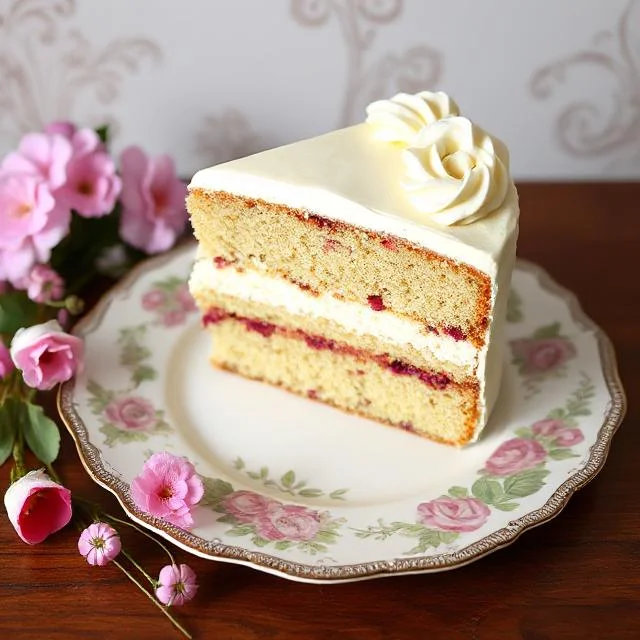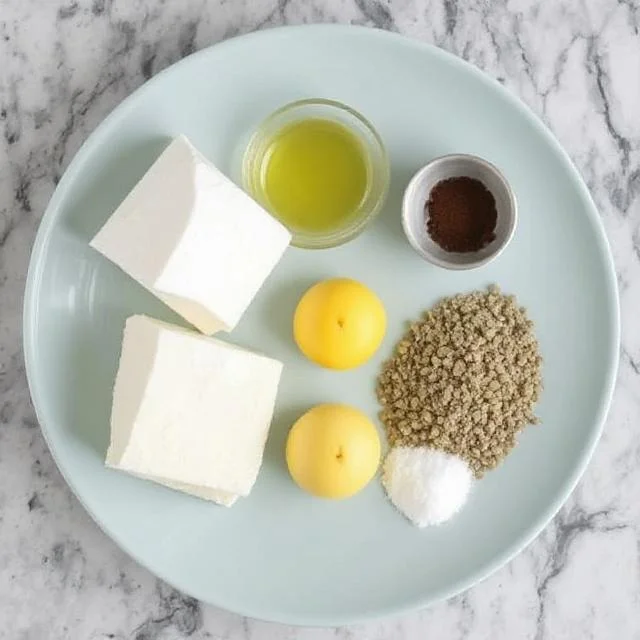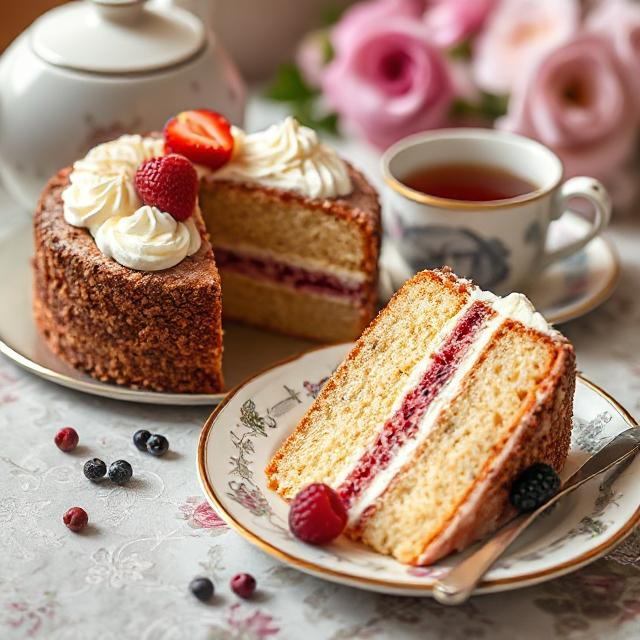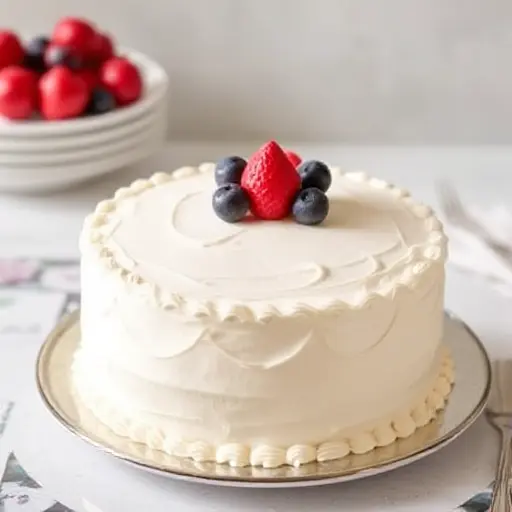The Victoria Sponge Cake, named after Queen Victoria, is a timeless British classic known for its light, airy sponge layers, sweet jam filling, and delicate dusting of powdered sugar. Perfect for afternoon tea or special occasions, this recipe guarantees a flawless cake every time. In this guide, we’ll walk you through the history, ingredients, baking techniques, and pro tips to create the best Victoria Cake ever. Let’s get started!
1. The History and Significance of Victoria Cake
Understanding the origins of this iconic dessert adds depth to your baking experience.
1.1 A Royal Legacy: The History of Victoria Cake
The Cake became popular during Queen Victoria’s reign in the 19th century. It was her favorite tea-time treat, often served with jam and clotted cream.
1.2 Traditional vs. Modern Variations
While the classic recipe uses only jam, modern versions sometimes include whipped cream or fresh berries. However, purists swear by simplicity.
1.3 Why It’s a British Staple
This cake symbolizes British baking heritage, balancing elegance and simplicity. Its light texture and balanced sweetness make it universally loved.
1.4 Perfect for Celebrations
From birthdays to garden parties, the Victoria Cake’s versatility makes it a crowd-pleaser.

Classic Cake on a Vintage Plate
2. Essential Ingredients for Authentic Victoria Cake Flavor
Quality ingredients are key to achieving the perfect Victoria Sponge.
2.1 Butter: The Foundation of Fluffiness in Victoria Cake
Use unsalted butter at room temperature for a light, airy texture. Avoid substitutes like margarine.
2.2 Self-Rising Flour: For the Perfect Rise
Self-rising flour ensures the cake layers rise evenly. If unavailable, mix all-purpose flour with baking powder (1 tsp per 150g flour).
2.3 Jam: Choosing the Right Fruit Spread
Opt for high-quality raspberry or strawberry jam with visible fruit pieces for a burst of flavor.
2.4 Eggs and Sugar: Binding and Sweetness
Fresh eggs and caster sugar (fine sugar) create a smooth, velvety batter.

Ingredients for Victoria Sponge Cake
3. Step-by-Step Baking Instructions for Victoria Cake
Follow these foolproof steps for a flawless Cake.
3.1 Preheat and Prep for the Perfect Victoria Cake
Preheat the oven to 350°F (180°C). Grease and line two 8-inch cake pans with parchment paper.
3.2 Creaming Butter and Sugar
Beat 200g softened butter and 200g caster sugar until pale and fluffy. Add 4 eggs one at a time, mixing well after each.
3.3 Folding in Flour
Gently fold 200g self-rising flour into the mixture using a spatula. Avoid overmixing to keep the batter light.
3.4 Baking to Perfection
Divide the batter evenly between the pans. Bake for 20–25 minutes until golden and springy. Cool on a wire rack.

Cake Batter in Mixing Bowl
4. Assembling and Decorating Your Victoria Cake
Presentation is everything!
4.1 Layering Victoria Cake with Jam for the Perfect Filling
Spread a generous layer of raspberry jam on one sponge. For extra richness, add whipped cream (optional).
4.2 Sandwiching the Sponges
Place the second sponge on top. Press gently to ensure even distribution without squishing the layers.
4.3 The Classic Dusting
Sift powdered sugar over the top for a simple, elegant finish.
4.4 Optional Garnishes
Add fresh berries, edible flowers, or a drizzle of melted chocolate for a modern twist.

Assembling Victoria Cake Layers
5. Pro Tips for Success and Serving Suggestions for Victoria Cake
Avoid common pitfalls and impress your guests.
5.1 Avoiding a Dry Sponge
Do not overbake! Check for doneness by inserting a skewer—it should come out clean.
5.2 Storing for Freshness
Store in an airtight container for up to 3 days. Avoid refrigeration, as it dries out the sponge.
5.3 Pairing with Tea or Coffee
Serve with Earl Grey tea or a latte for a traditional British experience.
5.4 Making Ahead for Events
Bake the sponges a day in advance. Assemble just before serving to maintain freshness.

Sliced Victoria Cake with Tea
Conclusion
The Victoria Cake is more than just a dessert—it’s a celebration of tradition, simplicity, and timeless flavor. With this step-by-step guide, you’ll master the art of baking this British classic. Whether you stick to the original recipe or add a personal twist, your Victoria Sponge is sure to delight. Share it with friends, savor it with tea, and enjoy the sweet taste of success!
Advice
The Victoria cake is a classic British dessert, known for its light, fluffy texture and simple yet elegant flavor. Start by using room-temperature butter, sugar, and eggs to ensure a smooth batter that rises evenly. Cream the butter and sugar together until light and fluffy, then gradually add eggs and sifted flour to avoid lumps. For the best result, bake the cakes in evenly sized pans, and allow them to cool completely before assembling. Once cooled, spread a generous layer of strawberry jam and freshly whipped cream between the layers for that signature flavor. Lightly dust with powdered sugar for a refined finish, and you’ll have a Victoria cake that’s perfect for afternoon tea or any special occasion!

